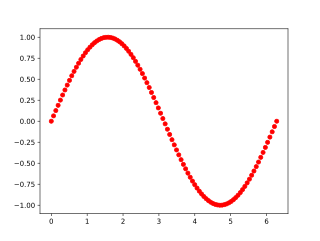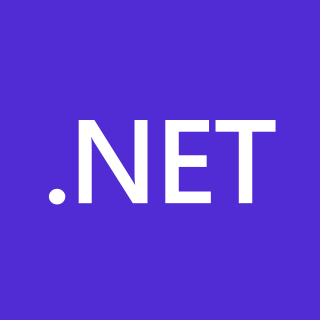
Python is a high-level, general-purpose programming language. Its design philosophy emphasizes code readability with the use of significant indentation.
JScript is Microsoft's legacy dialect of the ECMAScript standard that is used in Microsoft's Internet Explorer web browser.

NumPy is a library for the Python programming language, adding support for large, multi-dimensional arrays and matrices, along with a large collection of high-level mathematical functions to operate on these arrays. The predecessor of NumPy, Numeric, was originally created by Jim Hugunin with contributions from several other developers. In 2005, Travis Oliphant created NumPy by incorporating features of the competing Numarray into Numeric, with extensive modifications. NumPy is open-source software and has many contributors. NumPy is a NumFOCUS fiscally sponsored project.
Jython is an implementation of the Python programming language designed to run on the Java platform. It was known as JPython until 1999.
Boo is an object-oriented, statically typed, general-purpose programming language that seeks to make use of the Common Language Infrastructure's support for Unicode, internationalization, and web applications, while using a Python-inspired syntax and a special focus on language and compiler extensibility. Some features of note include type inference, generators, multimethods, optional duck typing, macros, true closures, currying, and first-class functions.

SharpDevelop is a discontinued free and open source integrated development environment (IDE) for the .NET Framework, Mono, Gtk# and Glade# platforms. It supports development in C#, Visual Basic .NET, Boo, F#, IronPython and IronRuby programming languages.
The Web Server Gateway Interface is a simple calling convention for web servers to forward requests to web applications or frameworks written in the Python programming language. The current version of WSGI, version 1.0.1, is specified in Python Enhancement Proposal (PEP) 3333.
Stackless Python, or Stackless, is a Python programming language interpreter, so named because it avoids depending on the C call stack for its own stack. In practice, Stackless Python uses the C stack, but the stack is cleared between function calls. The most prominent feature of Stackless is microthreads, which avoid much of the overhead associated with usual operating system threads. In addition to Python features, Stackless also adds support for coroutines, communication channels, and task serialization.

PyPy is an implementation of the Python programming language. PyPy often runs faster than the standard implementation CPython because PyPy uses a just-in-time compiler. Most Python code runs well on PyPy except for code that depends on CPython extensions, which either does not work or incurs some overhead when run in PyPy.
The Dynamic Language Runtime (DLR) from Microsoft runs on top of the Common Language Runtime (CLR) and provides computer language services for dynamic languages. These services include:
IronRuby is an implementation of the Ruby programming language targeting Microsoft .NET Framework. It is implemented on top of the Dynamic Language Runtime (DLR), a library running on top of the Common Language Infrastructure that provides dynamic typing and dynamic method dispatch, among other things, for dynamic languages.

Jim Hugunin is a software programmer who created the Python programming language extension Numeric, and later created Python implementations for the Java Platform (Jython) and for Microsoft .NET platform (IronPython); he has also co-designed the AspectJ extension for the Java programming language. He worked for Microsoft from 2004 to 2010, mainly on IronPython and Dynamic Language Runtime.

The .NET Framework is a proprietary software framework developed by Microsoft that runs primarily on Microsoft Windows. It was the predominant implementation of the Common Language Infrastructure (CLI) until being superseded by the cross-platform .NET project. It includes a large class library called Framework Class Library (FCL) and provides language interoperability across several programming languages. Programs written for .NET Framework execute in a software environment named the Common Language Runtime (CLR). The CLR is an application virtual machine that provides services such as security, memory management, and exception handling. As such, computer code written using .NET Framework is called "managed code". FCL and CLR together constitute the .NET Framework.

Kivy is a free and open source Python framework for developing mobile apps and other multitouch application software with a natural user interface (NUI). It is distributed under the terms of the MIT License, and can run on Android, iOS, Linux, macOS, and Windows.

GraalVM is a Java Development Kit (JDK) written in Java. The open-source distribution of GraalVM is based on OpenJDK, and the enterprise distribution is based on Oracle JDK. As well as just-in-time (JIT) compilation, GraalVM can compile a Java application ahead of time. This allows for faster initialization, greater runtime performance, and decreased resource consumption, but the resulting executable can only run on the platform it was compiled for. It provides additional programming languages and execution modes. The first production-ready release, GraalVM 19.0, was distributed in May 2019. The most recent release is GraalVM for JDK 22, made available in March 2024.
Nuitka is a source-to-source compiler which compiles Python code to C source code, applying some compile-time optimizations in the process such as constant folding and propagation, built-in call prediction, type inference, and conditional statement execution. Nuitka initially was designed to produce C++ code, but current versions produce C source code using only those features of C11 that are shared by C++03, enabling further compilation to a binary executable format by modern C and C++ compilers including gcc, clang, MinGW, or Microsoft Visual C++. It accepts Python code compatible with several different Python versions and optionally allows for the creation of standalone programs that do not require Python to be installed on the target computer.
Microsoft, a technology company historically known for its opposition to the open source software paradigm, turned to embrace the approach in the 2010s. From the 1970s through 2000s under CEOs Bill Gates and Steve Ballmer, Microsoft viewed the community creation and sharing of communal code, later to be known as free and open source software, as a threat to its business, and both executives spoke negatively against it. In the 2010s, as the industry turned towards cloud, embedded, and mobile computing—technologies powered by open source advances—CEO Satya Nadella led Microsoft towards open source adoption although Microsoft's traditional Windows business continued to grow throughout this period generating revenues of 26.8 billion in the third quarter of 2018, while Microsoft's Azure cloud revenues nearly doubled.









